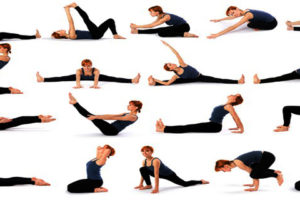A number of gyms and yoga studios provide classes from Bikram yoga, developed by Bikram Choudhury from versions of yoga that is hot, or the 70s, such as Evolation and CorePower Yoga. Yoga is performed with moisture between 60 and 40 percent, at room temperatures between 90 and 105F. During you move through a series of flowing poses. Hot yoga is a practice, for leaving puddles of sweat behind famed for fit people. Practitioners say that hot yoga will enhance both physical and psychological healththat it’ll improve mental clarity and endurance, improve flexibility, build strength, encourage weight reduction, flush toxins, make skin look better, alleviate back issues, and even cure asthma, heart issues, alongside other ailments.
But does it really have advantages and, more significant, is? Will it leave you feeling stimulated and invigoratedor irritable and lightheaded? Is hotter better? There’s been little research on hazards and the health benefits of none and yoga comparing it. A 2011 study from the Journal of Fitness and Exercise Science found that Bikram yoga lowered stress improved mindfulness, and improved endurance and balance. And a small study in 2013 in the Journal of Bodywork & Movement Therapies found that middle aged obese people who did Bikram yoga for eight weeks had improvements in glucose tolerance, with no adverse effects.
And on different hand, a study from the Journal of Exercise Physiology from 2012 reasoned that Bikram yoga training doesn’t have impact on pulmonary function along with maximal aerobic capacitynot surprising, actually, since yoga isn’t typically done as a cardio workout. What about claims that hot yoga enhances flexibility more than other styles of yoga? Sure, heat warms you up, so you might be capable to get a better stretch compared to stretching from the cold. However this could also make it simpler to overstretch and injure yourself.
Is it true that hot yoga can clean the body of toxins through sweating? The idea that sweating can detoxify the body has no basis in science. Although some toxins are eliminated through perspiration, the vast majority are processed by the liver and finally expelled through urine and feces, not sweat. Too hot to handle? The safety of hot yoga depends upon your level of fitness and overall health, among other factors. But exercising in extreme heat might lead to dehydration and hyperthermia, both of which may cause nausea, dizziness, fainting, muscle cramping, along with other symptoms. And if you become very dehydrated and drink a lot of water later without consuming electrolytes, you run the potential risk of developing hyponatremia, which may also cause such symptoms as nausea and muscle cramping, along with general malaise and also seizures.















